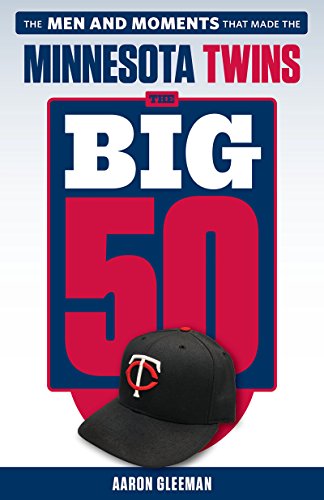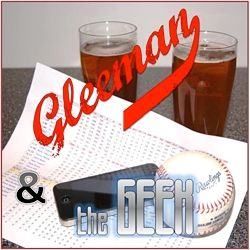April 5, 2012
Top 40 Twins Prospects of 2012: System Overview
Also in this series: 1-5, 6-10, 11-15, 16-20, 21-25, 26-30, 31-35, 36-40.
My annual series ranking and profiling the Twins' top prospects concluded last week, so here's the complete list of 40 players along with links to each individual write-up and an overview of the farm system as a whole:
1. Miguel Sano, 3B 21. David Bromberg, SP 2. Joe Benson, CF 22. Tom Stuifbergen, SP 3. Aaron Hicks, CF 23. Matthew Summers, RP 4. Eddie Rosario, 2B 24. Nate Roberts, LF 5. Liam Hendriks, SP 25. Carlos Gutierrez, RP 6. Oswaldo Arcia, RF 26. Manuel Soliman, SP 7. Kyle Gibson, SP 27. Deolis Guerra, RP 8. Levi Michael, SS 28. Pat Dean, SP 9. Alex Wimmers, SP 29. B.J. Hermsen, SP 10. Brian Dozier, SS 30. Matthew Hauser, RP 11. Adrian Salcedo, SP 31. Tyler Grimes, SS 12. Chris Parmelee, 1B 32. Terry Doyle, SP 13. Travis Harrison, 3B 33. James Beresford, SS 14. Hudson Boyd, SP 34. Jairo Perez, 3B 15. Madison Boer, RP 35. Scott Diamond, SP 16. Niko Goodrum, SS 36. Tyler Robertson, RP 17. Max Kepler, LF 37. JaDamion Williams, RF 18. Angel Morales, LF 38. Dereck Rodriguez, CF 19. Corey Williams, RP 39. Anderson Hidalgo, 3B 20. Chris Herrmann, C 40. Kyle Waldrop, RP
Tsuyoshi Nishioka, Ben Revere, Rene Tosoni, Alex Burnett, Trevor Plouffe, and Luke Hughes each graduated from last season's top 40, exhausting their Rookie of the Year eligibility and prospect status, and the Twins also traded away Billy Bullock. Joining the organization since last year are 2011 draft picks Levi Michael, Travis Harrison, Hudson Boyd, Madison Boer, Corey Williams, Matthew Summers, Tyler Grimes, and Dereck Rodriguez.
The farm system's overall quality remained fairly stable compared to last year, as a handful of solid but unspectacular prospects advanced to the majors and a solid draft class was added to the mix. Miguel Sano, Joe Benson, Eddie Rosario, Liam Hendriks, Oswaldo Arcia, and Brian Dozier took significant steps forward, moving up in the rankings, but the opposite was true for Aaron Hicks, Kyle Gibson, Alex Wimmers, Angel Morales, and David Bromberg.
Sano is one of baseball's truly elite prospects and has as much upside as any hitter in the minors, but the system as a whole still lacks star power and is particularly short on high ceilings among prospects who've played above Single-A. In terms of potential 2012 impacts, Benson, Hendriks, Dozier, and Chris Parmelee are the best bets, with Carlos Gutierrez, Deolis Guerra, and Kyle Waldrop looming as near-future bullpen options.
Overall the Twins' farm system likely rates somewhere between average and slightly below average, with the strengths being Sano, outfield depth, and middle-of-the-rotation starter depth and the weaknesses being a lack of power hitters, power pitchers, and MLB-ready infielders. I've been ranking Twins prospects since 2007 and those have more or less been the farm system's same weaknesses every year since then.
Sano was a huge addition in mid-2009 and has so far lived up to every bit of the hype and then some, but since giving him a record $3.15 million bonus the Twins have fallen into the middle of the pack for international spending while failing to hit any home runs in the draft. They hold the No. 2 overall pick in June's draft thanks to last season's 99 losses and also have five other picks in the top 100, so hopefully that will change soon.
This is a crucial year for the rebuilding effort thanks to perhaps the most stacked collection of draft picks in team history, but also because of the development of Sano and Rosario in the low minors, Gibson's recovery from elbow surgery, and Wimmers' recovery from extreme control problems. Jumping from a below-average system to one of baseball's best prospect collections between now and this time next year is doable, although far from guaranteed.
For much of the time I've been ranking Twins prospects their system has been underrated somewhat by the fact that they typically had multiple young, prospect-aged guys in prominent big-league roles, which eliminates them from "prospect" consideration without really changing their impact on the team's long-term outlook. That is no longer the case, as Revere, Parmelee, Burnett, and Hendriks are the only 25-and-under players on the Opening Day roster.
Plenty of the regulars are still under 30, so the Twins' nucleus is far from elderly, but they're just no longer prospect-aged and so the top-40 list accurately represents the organization's young talent in a thorough way. With that said, here's how the system would look by blending the prospects in with the young veterans, resulting in the following 29-and-under depth chart for the Twins' entire organization:
CATCHER FIRST BASE/CORNER OF CENTER FIELD
Joe Mauer, 29 Chris Parmelee, 24 Denard Span, 28
Drew Butera, 28 Trevor Plouffe, 26 Ben Revere, 24
J.R. Towles, 28 Rene Tosoni, 25 Joe Benson, 24
Chris Herrmann, 24 Oswaldo Arcia, 22 Aaron Hicks, 22
Max Kepler, 20 Angel Morales, 22
Nate Roberts, 23 Dereck Rodriguez, 20
JaDamion Williams, 21 Darrin Mastroianni, 26
SECOND BASE SHORTSTOP THIRD BASE
Alexi Casilla, 27 Brian Dozier, 25 Danny Valencia, 27
Luke Hughes, 27 Levi Michael, 21 Miguel Sano, 19
Eddie Rosario, 20 Niko Goodrum, 20 Travis Harrison, 19
Tsuyoshi Nishioka, 27 Tyler Grimes, 21 Jairo Perez, 24
Adam Bryant, 23 James Beresford, 23 Anderson Hidalgo, 23
RIGHTY STARTER LEFTY STARTER RELIEVER
Anthony Swarzak, 26 Francisco Liriano, 28 Matt Capps, 28
Liam Hendriks, 23 Pat Dean, 23 Glen Perkins, 29
Kyle Gibson, 24 Scott Diamond, 25 Brian Duensing, 29
Alex Wimmers, 23 Alex Burnett, 24
Adrian Salcedo, 21 Jeff Manship, 27
Hudson Boyd, 18 Matt Maloney, 28
David Bromberg, 24 Kyle Waldrop, 26
Tom Stuifbergen, 23 Madison Boer, 22
Manuel Soliman, 22 Corey Williams, 21
Matthew Summers, 22
Carlos Gutierrez, 25
Deolis Guerra, 23
Matthew Hauser, 24
Tyler Robertson, 24
Lester Oliveros, 23

